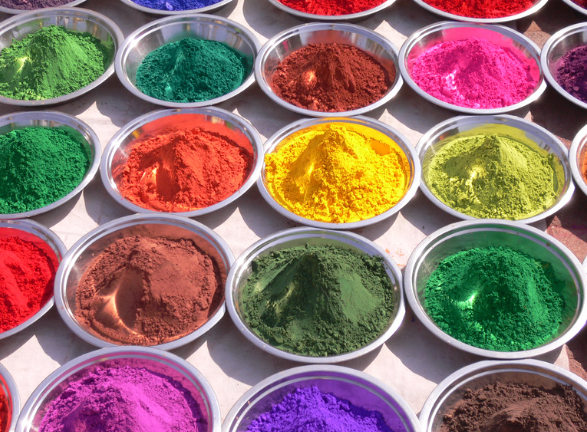Challenge, transcendence, coll

The Growing Role of Natural Colorings in Pet Food Formulations
In recent years, natural colorings have become increasingly prominent in pet food formulations. This shift is driven by consumer preferences for more natural and transparent products, mirroring trends in human food. To explore this trend, we turn to insights from Ashlee Martin, a senior application scientist at Oterra, a leading global provider of naturally sourced colors.
The Rise of Natural Colors
The move towards natural colorings in pet food aligns with a broader consumer demand for healthier, more natural products. As pet owners become more discerning about what they feed their pets, they are scrutinizing labels more closely. This heightened awareness has led pet food manufacturers to seek natural color solutions, derived from plants, fruits, and vegetables, rather than synthetic additives.
Historically, natural colorings were the norm until synthetic colors gained prominence following the introduction of the Food, Drug, and Cosmetic Act of 1938. This act allowed for the widespread use of synthetic colors, which were considered safer and more stable at the time. Over the decades, synthetic colors became the standard, but recent years have seen a resurgence of interest in natural alternatives. This shift is partly due to growing consumer skepticism about synthetic additives and a desire for more natural options. (Beaton, 2024)
Regulatory Landscape
Natural and synthetic colorings are regulated differently. Synthetic colors require certification by the FDA, indicated by the FD&C label, while natural colors, such as those from fruit or vegetable juices, fall under different regulations. These natural colors adhere to strict standards but are exempt from the same certification requirements as synthetic colors. The increasing interest in natural colorings is partly due to evolving consumer attitudes towards food safety and ingredient transparency. (Beaton, 2024)
Current Usage in Pet Food
Natural colorings are now prevalent across various pet food categories. They are commonly used in treats to enhance visual appeal, especially during special occasions or holidays. In contrast, traditional kibble often relied on synthetic colors, though many manufacturers are now transitioning to natural options or removing colors altogether. This shift is largely driven by consumer preference, as pet owners seek products that align with their values and expectations. (Beaton, 2024)
Consumer Preferences and Color Matching
The demand for specific colors in pet food is driven by consumer preferences rather than pets’ visual perceptions. While pets themselves cannot discern colors in the same way humans can, the appearance of pet food plays a significant role in consumer choices. Manufacturers often rely on marketing decisions and consumer testing to determine the most appealing colors. For instance, a rich, meaty shade might be desirable to simulate the appearance of real meat, even though pets do not perceive color the same way humans do. (Beaton, 2024)
Popular Natural Color Sources
Among the popular natural colorings is black carrot, which provides stable purple and red hues. Its versatility and stability make it a favored choice. Other colors, like those derived from turmeric, offer vibrant shades, and new sources, such as the Jaguar fruit from Colombia, are emerging. This fruit produces a unique blue shade and represents a significant development in natural coloring technology. (Beaton, 2024)
Challenges and Innovations in Sourcing
Sourcing natural colorings involves navigating various challenges, including supply chain disruptions. Natural color sources, like black carrot from Turkey or turmeric from India, require careful management of global supply chains. Despite recent disruptions, companies like Oterra work closely with farmers and use advanced forecasting to ensure a steady supply of natural colors. (Beaton, 2024)
Benefits and Challenges of Natural vs. Synthetic Colors
The transition from synthetic to natural colors presents both benefits and challenges. While natural colors are preferred for their perceived health benefits and transparency, they often come with higher costs and varying performance in formulations. Technological advancements are helping bridge this gap, making natural colors more accessible and effective. Companies like Oterra conduct extensive trials and stability testing to optimize the use of natural colors in pet food. (Beaton, 2024)
The Future of Natural Colorings
Looking ahead, the natural coloring industry is poised for growth. Innovations in sourcing, such as the development of new colorants like Jaguar blue, and advancements in extraction technologies are expected to drive further progress. As consumer demand for natural products continues to rise, the pet food industry will likely see more diverse and sophisticated natural color options. (Beaton, 2024)
In conclusion, natural colorings are carving out an increasingly important role in pet food formulations. Driven by consumer demand and advances in technology, this trend reflects a broader movement towards more natural and transparent products in both human and pet food industries.

Reference: Beaton, L. (Host). (2024, February 13). EPISODE 54: What place do natural colorings have in pet food formulations? [Audio podcast episode]. In Trending: Pet Food Podcast. Oterra's Ashlee Martin. Retrieved July 24, 2024, from www.petfoodindustry.com/trending-pet-food-podcast/podcast/15664105/episode-54-what-place-do-natural-colorings-have-in-pet-food-formulations.

